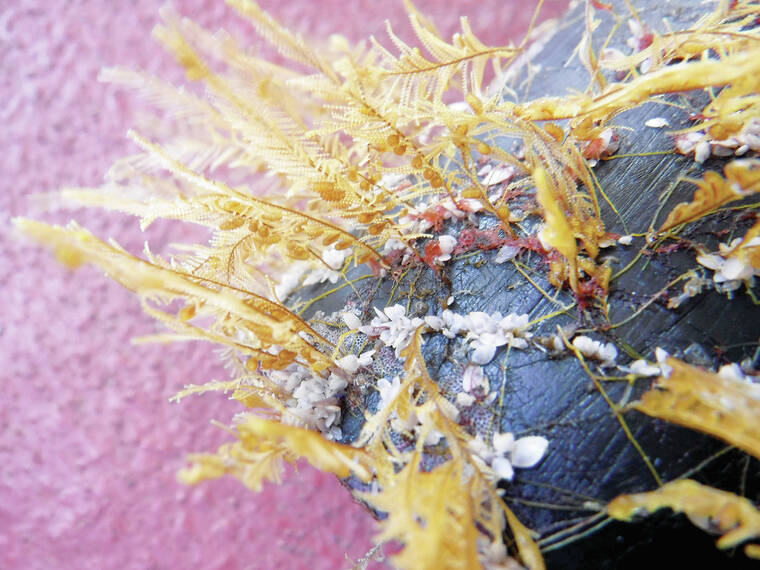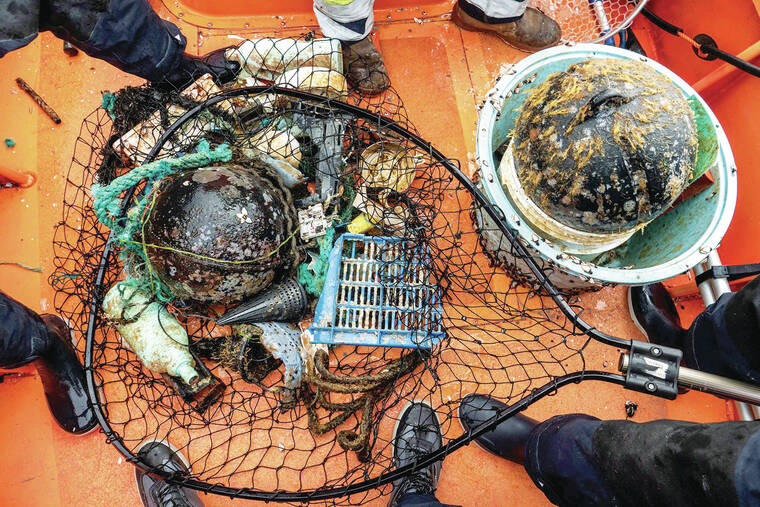LIHU‘E —Even on a garbage patch in the middle of the ocean, life finds a way.
Researchers from the University of Hawai‘i at Manoa and the Smithsonian Environmental Research Center have discovered coastal species forming colonies on deep ocean plastic debris, highlighting humanity’s profound impact on Earth’s environment.
In their study, researchers found that the Great Pacific garbage patch — a 620,000 square mile spiral of trash between California and Hawai‘i — not only houses at least 37 species of coastal invertibrates, such as crabs and sea anenomes, the species are able to survive and reproduce, creating new, distinct ecosystems atop the open ocean.
“The discovery suggests that past biogeographical boundaries among marine ecosystems — established for millions of years — are rapidly changing due to floating plastic pollution accumulating in the subtropical gyres,” said Linsey Haram, research associate at SERC and lead author of the study.
Scientists had previously discovered that such coastal species could live on plastic debris. One study found hundreds of living Japanese coastal species traveled to North America and Hawai‘i this way following the 2011 tsunami off Japan’s coast.
However, this study marks the first time in which the coastal species were found to have reproduced in the open ocean, spreading from one piece of debris to another.
“Our results suggest coastal organisms are now able to reproduce, grow and persist in the open ocean, creating a novel community that did not previously exist, being sustained by the vast and expanding sea of plastic debris,” said Gregory Ruiz, senior scientist at SERC and co-author of the study. “This is a paradigm shift in what we consider to be barriers to the distribution and dispersal of coastal invertebrates.”
The researchers found the diverse set of coastal species on over 70 percent of examined debris, suggesting such colonization is not only possible but a common occurence. Additionally, researchers expressed surprise over how easily the species colonized neighboring trash, including the study’s own research instruments.
While the coastal species have taken harbor in the middle of the ocean, scientists worry the new ecosystem could create a new threat for Hawai‘i in its efforts to prevent invasive species from entering its islands.
“In the past, the fragile marine ecosystems of the islands were protected by the very long distances from coastal communities of Asia and North America,” said Nikolai Maximenko, senior researcher at the UH Manoa School of Ocean and Earth Science and Technology and co-author of the study.
“The presence of coastal species persisting in the (Great Pacific garbage patch) near Hawai‘i is a game changer that indicates that the islands are at an increased risk of colonization by invasive species.”
Still, the researchers state that further studies are needed to determine how significant the threat is.
“It is not clear how good the chances are for these species to invade Hawai‘i,” Maximenko said. “We don’t know, and this is why we need more research in the open ocean on how these species can potentially interact with our Hawaiian ecosystems.”
•••
Jackson Healy, reporter, can be reached at 808-647-4966 or jhealy@thegardenisland.com.



